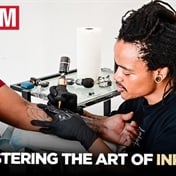
According to Breast Imaging Specialists, Dr Shirley Lipschitz and Dr Liat Malek, from the Breast Wellness Centre, in Johannesburg, misconceptions around breast cancer attribute to late or misdiagnosis, which can be deadly.
“This Breast Cancer Awareness Month, we urge women to be discerning in the information they consume regarding breast cancer, and the decisions they make based on it,” says 1st for Women’s Casey Rousseau.
READ MORE: Zoleka Mandela shares pictures of her battle with breast cancer
The Breast Wellness Centre highlights six misconceptions about breast cancer and debunks them with the facts:
- If I don’t have a family history of breast cancer, I don’t need screening
Less than 10% of people diagnosed with breast cancer have a family history, and less than 5% have a hereditary gene. The majority of people diagnosed have NO family history of breast cancer.
- Mammograms are dangerous
Mammograms are a source of radiation, much like any X-ray, however these have never been proven to cause breast cancer. Through many studies and trials, it is thought that out of one million women, having annual mammograms from 30 to 40 years, only one or two women will develop a cancer as a result of the mammogram itself. In fact, the dose of a single mammogram is comparable to the radiation one would be exposed to on a flight to, for example, London.
- Only some women can develop breast cancer
Based on 2014 statistics, in South Africa, breast cancer is the most common cancer in white, Asian and coloured women, and the second most common cancer in black women.
READ MORE: H&M launches a beautiful and functional bra collection for breast cancer survivors
- Breast cancer affects only women
Men can also develop breast cancer but the occurrence of this is low at less than 1%.
- I don’t need a mammogram unless I feel a lump
The aim of a mammogram is to diagnose breast cancer as early as possible, even before any signs or symptoms develop. By the time a lump is felt, the breast cancer may have already progressed and started spreading outside the breast. Early breast cancer is easier and more successful to treat.
- Breast cancer cannot be treated
Breast cancer is treatable and can be cured. There are many new and improved methods of treatment, both surgical and/or through the use of hormonal therapy, chemotherapy and/or radiation. The earlier breast cancer is found and treated, the more likely it is to be successfully eradicated – but more advanced cancers can also be successfully treated.
To provide further clarity on the subject of breast cancer, the Breast Wellness Clinic provides answers to some frequently asked questions:
- When should I start having regular mammograms?
Women should start regular screening mammograms at the age of 40. Research has shown that when women start screening from the age of 40, more lives are saved.
Women at high risk for breast cancer should consult a breast specialist as they may need to be monitored differently.
READ MORE: Serena Williams goes topless and sings for breast cancer awareness
- Who is at higher risk for breast cancer?
There are multiple factors that may contribute to a women being at higher risk for breast cancer, including: family history, genetic factors (BRCA1 and BRCA2 – sometimes referred to as the Angelina Jolie gene), personal history, and hormonal factors. If you think you are at a higher risk to develop breast cancer, please consult a physician.
- How often should I have a mammogram?
Mammograms should be done annually or every two years.
- What are the signs and symptoms of breast cancer?
- A lump or thickening in the breast, or in the armpit.
- Skin dimpling and/or redness of the skin.
- Nipple changes such as a nipple discharge, nipple inversion, discoloration or eczema-like changes.
- Shrinkage of the breast or increase in size of the breast.
- What is 3D mammography?
3D mammography or Tomosynthesis is an advanced, relatively new technology, which scans small sections of the breast. This allows the radiologist to look through the breast tissue, improving the detection of small breast cancers. When combined with the correct software, 3D mammography or Tomosynthesis uses less or the same amount of radiation as regular 2D mammograms.
“Access to accurate information, from reputable sources, is critical to seeking and receiving the correct diagnosis and treatment of breast cancer – but so is being prepared with relevant insurance. 1st for Women’s All Women Dread Disease Cover provides cover for female cancers, including breast cancer – ensuring that your loved ones are taken care of should the unthinkable happen,” concludes Rousseau.


















